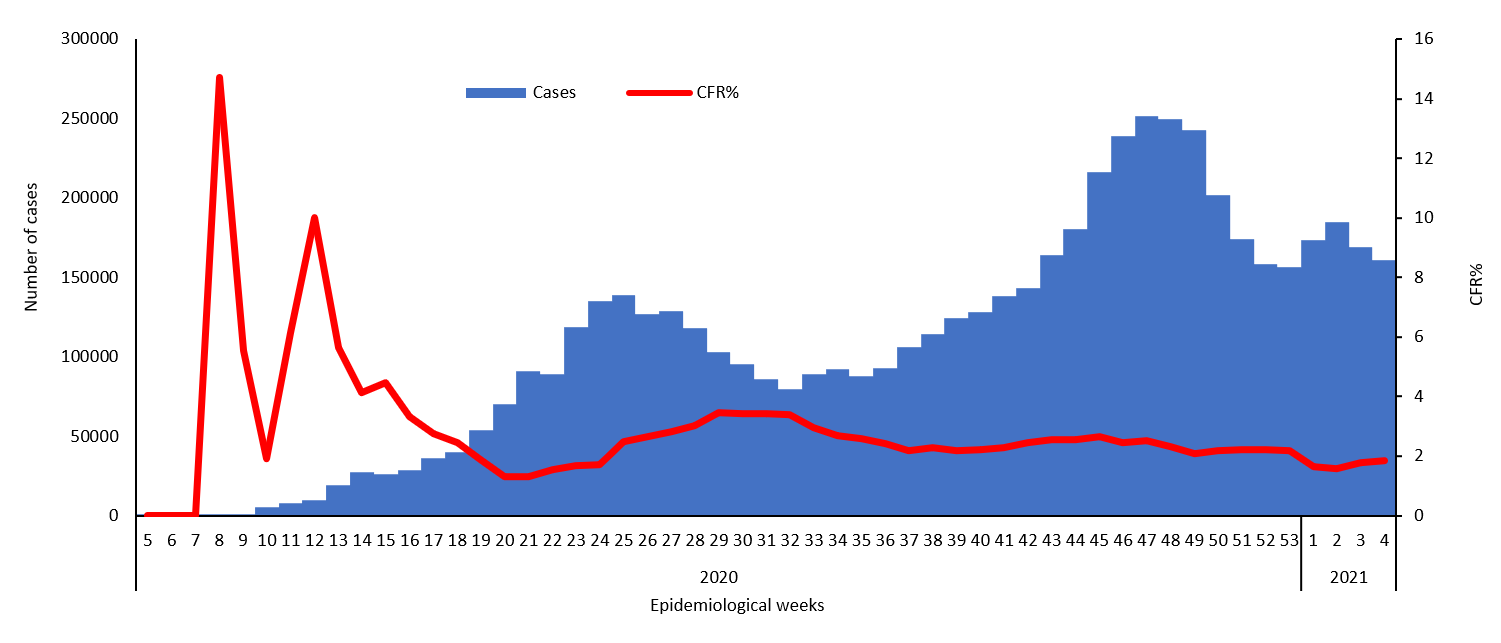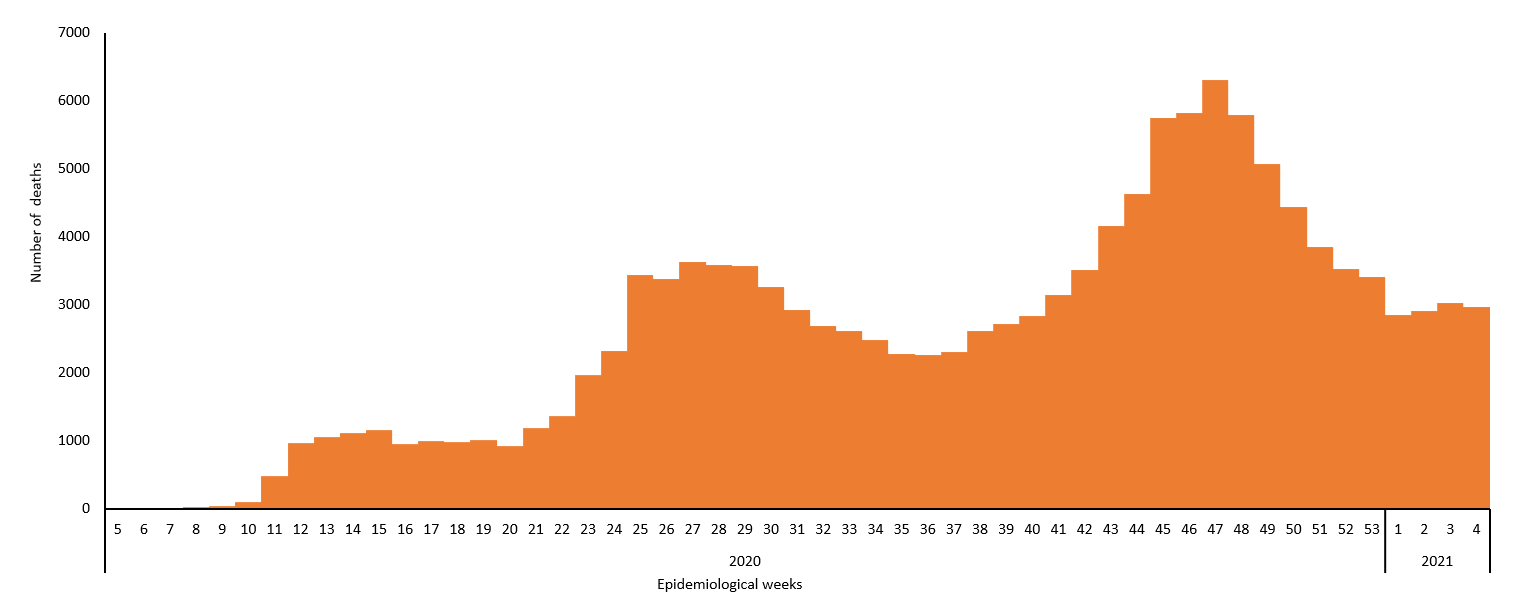The coronavirus disease COVID-19 continues to spread at the regional and global levels. As of 30 January 2021, the global cumulative incidence reached 101 612 314 reported cases and 2 198 439 associated deaths with a case fatality ratio (CFR) of 2.2%. Meanwhile, the 22 countries of the Eastern Mediterranean Region (EMR) have reported a total of 5 673 973 cases, which represent about 5.6% of the global count, with 134 336 associated deaths (CFR 2.4%). Most countries in the Region are in the community transmission phase.
Since the beginning of the outbreak, the country that has reported the highest number of total cases in the Region is Islamic Republic of Iran (1 411 731 cases; 24.9% of the Region’s total), followed by Iraq (618 922; 10.9%) and Pakistan (544 813; 9.6%). Islamic Republic of Iran also reported the highest number of total associated deaths (57 889; CFR 4.1%) followed by Iraq (13 041; CFR 2.1%) and Pakistan (11 657; CFR 2.1%). The highest CFRs were reported by Yemen (29%) followed by Syrian Arab Republic (6.5%), while the lowest CFRs were reported by Qatar (0.2%) followed by United Arab Emirates (0.3%) and Bahrain (0.4%).
During epidemiological week 4, the Region reported a decrease of 4.7% in cases when compared to the previous week (161 098 cases compared to 169 119 cases). Similarly, a 1.7% decrease was observed for associated deaths (2968 deaths compared to 3020 deaths).
United Arab Emirates, Lebanon and Tunisia reported a relative increase in COVID-19 activity in week 4. The cumulative number of cases increased from 274 376 to 300 661 in United Arab Emirates (10% weekly increase), from 276 587 to 298 913 in Lebanon (8% weekly increase) and from 197 373 to 208 885 in Tunisia (5.8% weekly increase). Lebanon, Tunisia, and United Arab Emirates had the largest relative increase in deaths.
In terms of testing, a total of 84 189 598 laboratory PCR tests were conducted since the start of the outbreak across the Region including 3 084 704 tests in week 4, which shows a 21% decrease compared to the previous week (3 900 822). The highest number of PCR tests were reported from United Arab Emirates (25.6 million), followed by Saudi Arabia (12.3 million) and Islamic Republic of Iran (9.2 million). The United Arab Emirates and Bahrain are performing the highest rates of testing per capita (2586/1000 and 1587/1000, respectively). The average positivity rate for the Region is 6.7%. WHO recommends a positivity rate of around 3–12% as a general benchmark indicating adequate testing, which was achieved in most countries of the Region.
COVID-19 vaccination has started in six countries of the Region. The total number of doses administered so far include 3 440 777 in United Arab Emirates, 172 912 in Bahrain, 440 000 in Saudi Arabia, 37 045 in Oman, 34 148 in Jordan, 1315 in Egypt, 126 000 in Morocco, and 3500 in Kuwait.
Supporting countries in the Region
The regional incident management support team continues to coordinate the response and provide technical support to countries and partners in the Region in the areas of coordination and partnership, surveillance, laboratory capacity, clinical management, infection prevention and control, risk communication and community engagement, points of entry according to the International Health Regulations (2005), research, health systems, and essential health services among others. Activities this week included:
organizing a two-week mission to Afghanistan to support the Ministry of Health in enhancing its infection prevention and control (IPC) response to COVID-19. The mission involved 40 master trainers and the implementation of IPC measures at 6 select hospitals;
training 1500 participants on telemedicine covering three providers in Pakistan to improve the coverage of sexual, reproductive, maternal, newborn, child and adolescent health (SRMNCAH) services during and after COVID 19 pandemic; and
updating the clinical management guidance for COVID-19 on 25 January 2021.


For more data from the Region, please visit the COVID-19 dashboard.
Subscribe to the monthly infectious hazard preparedness newsletter of WHO’s Health Emergencies Programme for latest data and analysis on epidemic- and pandemic-prone diseases, as well as news on outbreak preparedness and response within WHO’s Eastern Mediterranean Region.


